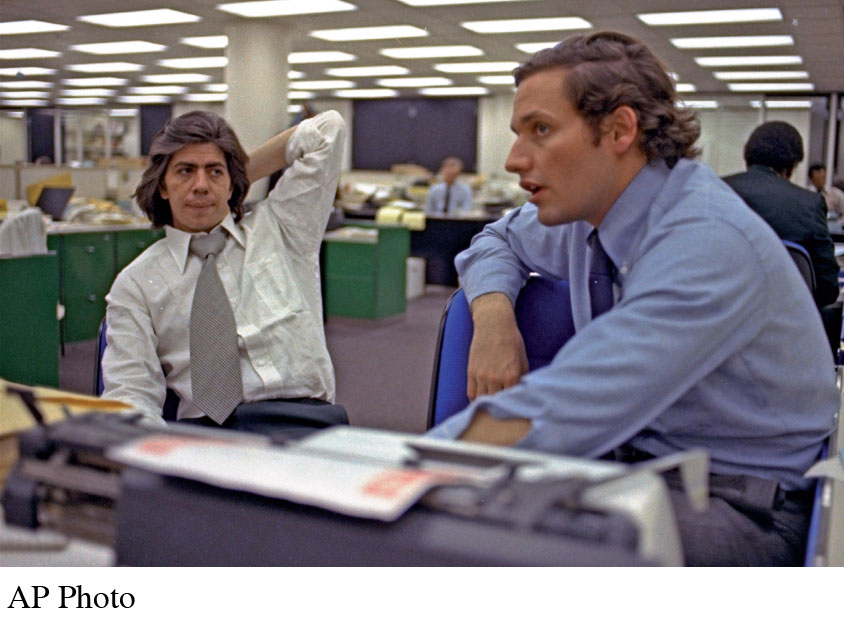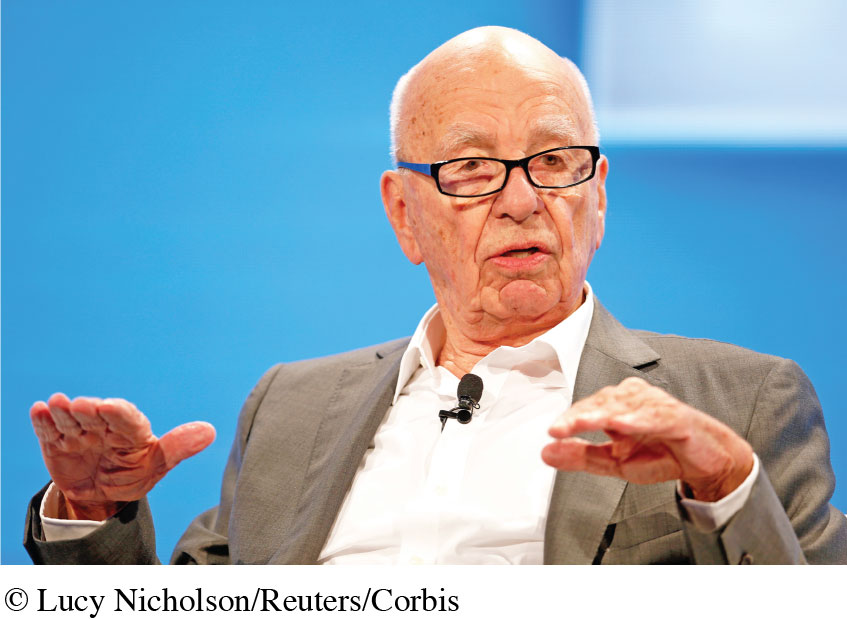MEDIA LITERACY Case Study: From Uncovering Scandals to Being the Scandal
MEDIALITERACYCase StudyFrom Uncovering Scandals to Being the Scandal
The 1960s and 1970s are sometimes referred to as a “golden age” of American journalism. Although in retrospect there were serious problems during this period (including the lack of women and minorities in mainstream newsrooms), this was a time when journalists could document and influence great social changes of the time, from the Civil Rights struggle to the Vietnam War.

It was also a time of investigative reporting that would influence generations of journalists, especially because of a story known by a single word: Watergate. Washington Post reporters Bob Woodward and Carl Bernstein started researching after five men were arrested for breaking into and entering the Democratic National Committee headquarters at the Watergate office complex in Washington, D.C., on June 17, 1972. By the time they were done, they had uncovered information that this break-in was just one of many illegal activities that President Richard Nixon had authorized and was carried out by Nixon’s staff. Ultimately, the House of Representatives started investigating, and on August 8, 1974, Nixon resigned before the House could decide on impeachment.


 Visit LaunchPad to watch a clip from All the President’s Men. Do you think a similar movie about journalism would be made today?
Visit LaunchPad to watch a clip from All the President’s Men. Do you think a similar movie about journalism would be made today?

Fast-forward a few decades, and one of the great scandals of recent years was about a news operation that was largely being exposed by another newspaper (not to say there weren’t other scandals involving journalists and news organizations in between, of course). But this time the stories delved into both corruption (of the corporate variety) and a shameful breakdown of journalistic ethics, at least on the part of some of the players. Media mogul Rupert Murdoch was forced to withdraw his $12 billion takeover bid for British Sky Broadcasting after a phone hacking scandal involving key figures in his publishing empire brought down Murdoch’s News of the World, one of Britain’s oldest newspapers. In the continuing fallout of the phone hacking scandal, Murdoch’s News Corp. announced in 2012 that it would divide its publishing companies (newspapers and books) from its entertainment holdings (television and movie studios).
A rival paper, the Guardian, played a prominent role in publicizing the lurid details of the case. Reporter Nick Davies continued to investigate the News of the World after the police, the government, and the rest of the press accepted the News Corp. story that the hacking of British royal family members, including Prince Charles, was an isolated event. When Davies discovered that James Murdoch (son of Rupert) paid more than $1 million in hush money to cover up another instance of phone hacking, the scandal took on new life, reaching a tipping point when Davies reported that the News of the World had hacked into the phone calls of Milly Dowler, a missing teenager. Davies revealed that the hackers had deleted Dowler’s voice messages so they could listen to new ones—a transgression that gave her parents false hope that she was still alive. This revelation damaged News Corp. from top to bottom; intrepid reporting from Nick Davies and the Guardian curtailed Murdoch’s stranglehold on British politics and media.1
Davies, then, demonstrates that courageous reporting can make a real difference on a grand scale, even or especially if it involves standing up to a media conglomerate in the news business. Imagine, for example, what might have been avoided if such investigative journalism had addressed the abuses of Wall Street and the too-big-to-fail banks in the lead-up to the financial collapse of 2008. The story of journalism taking the practices that took down corrupt political leaders and applying them to a corrupt conglomerate should inspire business reporters to do more to be better watchdogs over corporate interests.
APPLYING THE CRITICAL PROCESS
DESCRIPTION Choose two major newspapers, and investigate how each covered the phone hacking scandal and other media business stories. How does the coverage differ in terms of the number of articles devoted to the scandal in May, June, and July of 2011? How many editorial and opinion pieces are devoted to the scandal during this three-month period?
ANALYSIS How do the two newspapers characterize the scandal? Are there differences in the editorial treatment of Rupert Murdoch and his son James?
INTERPRETATION Write a two- to three-paragraph critical interpretation of the “meanings” of the scandal proposed by the two newspapers. Are there differences in the coverage of Murdoch being forced to withdraw his bid for British Sky Broadcasting?
EVALUATION Determine which papers and stories you would judge as good and which ones you would judge as weaker models for how business and media stories should be covered. Are some elements that should be included missing from the coverage? If so, make suggestions.
ENGAGEMENT Contact a business editor from a newspaper and ask how he or she makes content decisions. What kind of business and economic reporting catches the editorial department’s eye? What considerations are made when business editors decide what to cover?